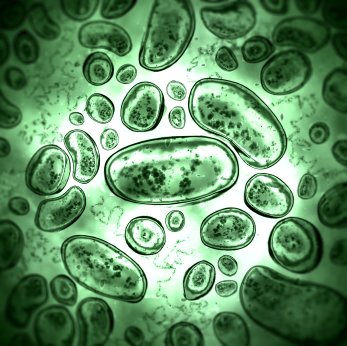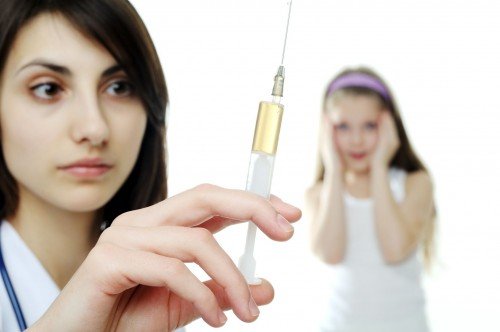Understand and Protect Against Bacteria, Viruses and Infection

Germs live everywhere. You can find germs in the air, on food, plants and animals, in the soil, in the water, and on just about every other surface — including your own body.
Most germs won’t harm you. Your immune system protects you against a multitude of infectious agents. However, some germs are formidable adversaries because they’re constantly mutating to breach your immune system’s defenses. Knowing more about how germs work can increase your chances of avoiding infection.
Infectious agents: From bacteria to worms
Infectious agents come in a variety of shapes and sizes. Categories include:
- Bacteria
- Viruses
- Fungi
- Protozoa
- Helminths
Bacteria
Bacteria are one-celled organisms visible only with a microscope. They’re so small that if you lined up a thousand of them end to end, they could fit across the end of a pencil eraser. They’re shaped like short rods, spheres or spirals.
Not all bacteria are harmful. In fact, less than 1 percent cause disease, and some bacteria that live in your body are actually good for you. For instance, Lactobacillus acidophilus — a harmless bacterium that resides in your intestines — helps you digest food, destroys some disease-causing organisms and provides nutrients to your body.
Many disease-causing bacteria produce toxins — powerful chemicals that damage cells and make you ill. Bacteria cause diseases such as:
- Strep throat
- Tuberculosis
- Urinary tract infections
Viruses
Viruses are much smaller than cells. In fact, viruses are basically just capsules that contain genetic material. They may be shaped like rods, spheres or tiny tadpoles. To reproduce, viruses invade cells in your body, hijacking the machinery that makes cells work. Host cells are eventually destroyed during this process.
Viruses are responsible for causing a wide range of diseases, including:
- AIDS
- Common cold
- Ebola hemorrhagic fever
- Genital herpes
- Influenza
- Measles
- Smallpox
- Antibiotics have no effect on viruses.
Fungi
There are many different varieties of fungi, and we eat quite a few of them. Mushrooms are fungi, as is the mold that forms the blue or green veins in some types of cheese. And yeast, another type of fungi, is a necessary ingredient to make most types of bread.
Other fungi can cause illness. One example is candida — a yeast that can cause infection. Candida can cause thrush — an infection of the mouth and throat — in infants and in people taking antibiotics or who have an impaired immune system. Fungi are also responsible for such skin problems as athlete’s foot and ringworm.
Protozoa
Protozoa are single-celled organisms that behave like tiny animals — hunting and gathering other microbes for food. Many protozoa call your intestinal tract home and are harmless. Others cause disease, such as:
- Giardia
- Malaria
- Toxoplasmosis
Protozoa often spend part of their life cycle outside of humans or other hosts, living in food, soil, water or insects. Some protozoa invade your body through the food you eat or the water you drink. Others, such as malaria, are transmitted by mosquitoes.
Helminths
Helminths are among the larger parasites. The word “helminth” comes from the Greek for “worm.” If this parasite — or its eggs — enters your body, it takes up residence in your intestinal tract, lungs, liver, skin or brain, where it lives off the nutrients in your body. Some types of helminths include tapeworms and roundworms.
Understanding infection vs. disease
There’s a distinct difference between infection and disease. Infection, often the first step, occurs when bacteria, viruses or other microbes enter your body and begin to multiply. Disease occurs when the cells in your body are damaged — as a result of the infection — and signs and symptoms of an illness appear.
In response to infection, your immune system springs into action. An army of white blood cells, antibodies and other mechanisms goes to work to rid your body of whatever is causing the infection. For instance, in fighting off the common cold, your body might react with fever, coughing and sneezing.
Warding off germs and infection
What’s the best way to stay disease-free? Prevent infections from happening in the first place. You can prevent infection through simple tactics, such as regular hand-washing.Often overlooked, hand-washing is one of the easiest and most effective ways to protect yourself from germs and most infections. Wash your hands thoroughly before preparing or eating food, after coughing or sneezing, after changing a diaper, and after using the toilet. When soap and water aren’t readily available, alcohol-based hand-sanitizing gels can offer protection.
When to seek medical care
You should seek medical care if you suspect that you have an infection and you have experienced any of the following:
- An animal or human bite
- Difficulty breathing
- A cough lasting longer than a week
- A fever of 100.4 F (38 C) or more
- Periods of rapid heartbeat
- A rash, especially if it’s accompanied by a fever
- Swelling
- Blurred vision or other difficulty seeing
- Persistent vomiting
- An unusual or severe headache
Your doctor can perform diagnostic tests to find out if you’re infected, the seriousness of the infection and how best to treat that infection.



